Friday August 16, The Czech countryside (186 kms)
Today we don’t have lots of kms to cover. We wanted to take a look at the Czech countryside and visit some beautiful cities on the way to Cesky Krumlov. Early in the morning, we load our bikes under the gaze of some Germans with Goldwings, who arrived at the hotel the night before. They inspect the new Adventure and talk to each other. Any attempt for conversation is useless. They ignored us, as if we weren’t there.
Soon we leave behind us the capital of Czech and follow an endless straight road, crossing green meadows and small forests.
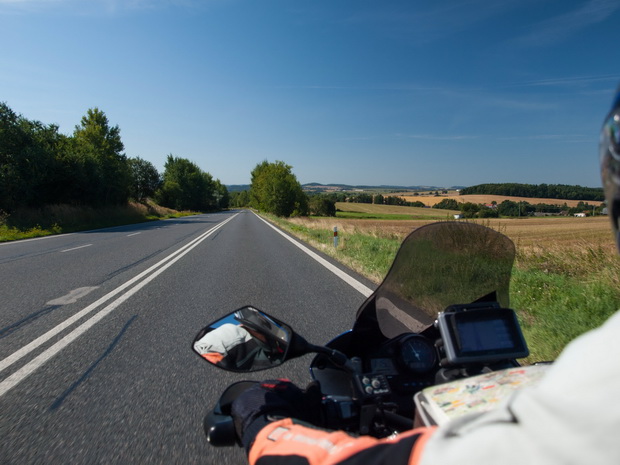
In a short time we park at the main square of Ceske Budejovice, which is the largest square in the country, surrounded by beautiful Gothic, Baroque and Renaissance buildings.
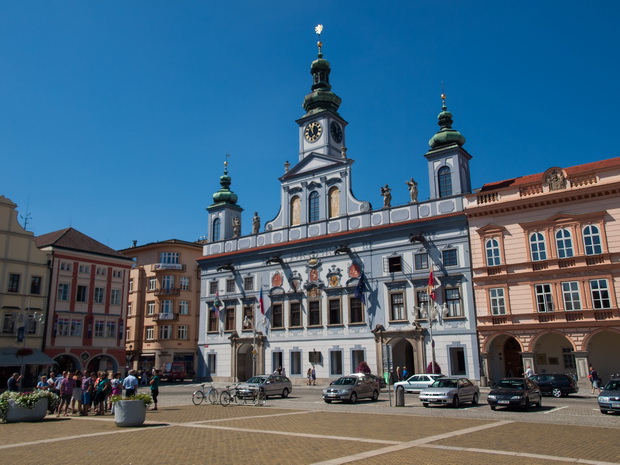

Shark attack
At the center of the square, stands the fountain of Samson, which is the tallest fountain in the country.


Next to the square, lies a smaller one, which houses a small but interesting motorcycle museum. The museum exposes mainly Czech motorcycles and various other things such as old cans, road signs, weapons!, motorcycling clothes, radios, plows!, gasoline saws! etc. Unfortunately, all the information was in Czech and whatever is written in the following captions, is translated by google:

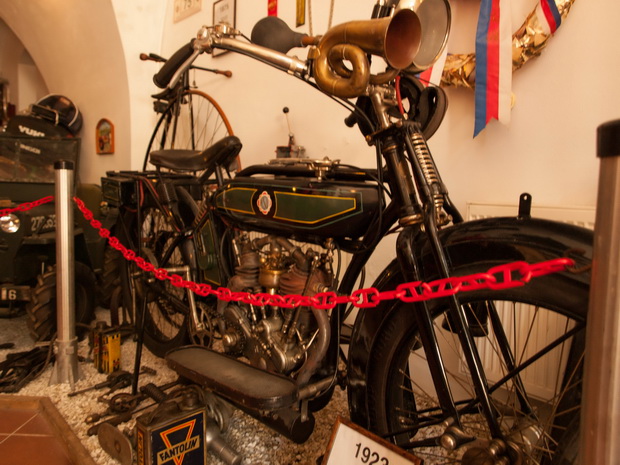
1922, NSU

1949, Hurikan 250, produced in Czech, 20hp at 7800 RPM

1938, TIZ AM 600, made in USSR. Performance: 16,5hp at 3800 RPM, 95km/h max speed.

1943, Harley Davidson 42 WLA, 750cc
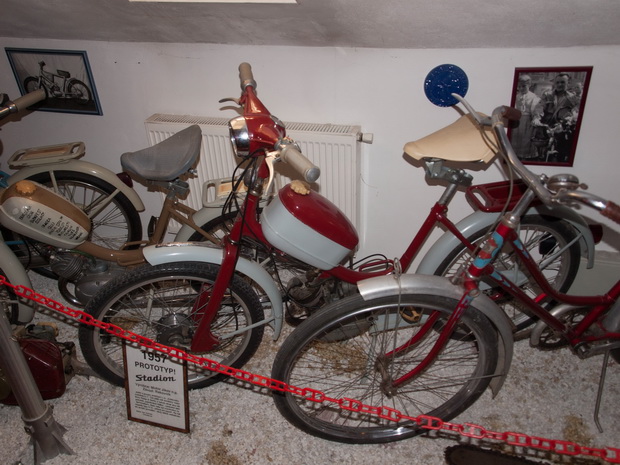
1957, Stadion, prototype

1947, Ducati Cucclolo t2, 48cc
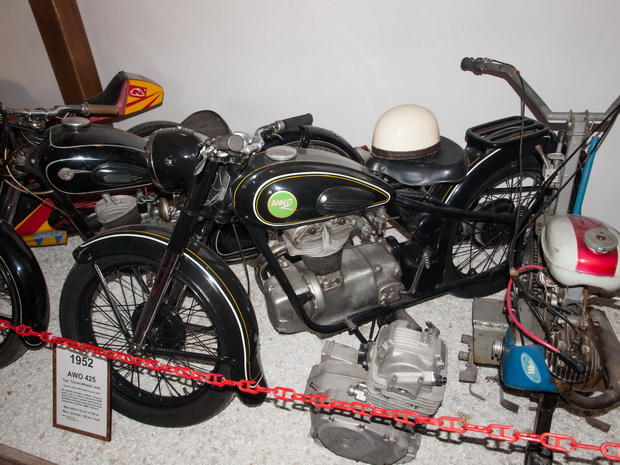
1952, AWO 425, Made in Germany. Performance: 12hp at 4750 RPM, 105km/h max speed

1939, ESKA-Sachs Mofa 98, made in Czech. Performance: 2,2hp at 3500 RPM, 60km/h max speed

1986, Babetta 80cc prototype, made in USSR
Then we climb 225 steep steps, to find ourselves at the top of the tower of the Black Church, next to the Cathedral of St. Nicholas.
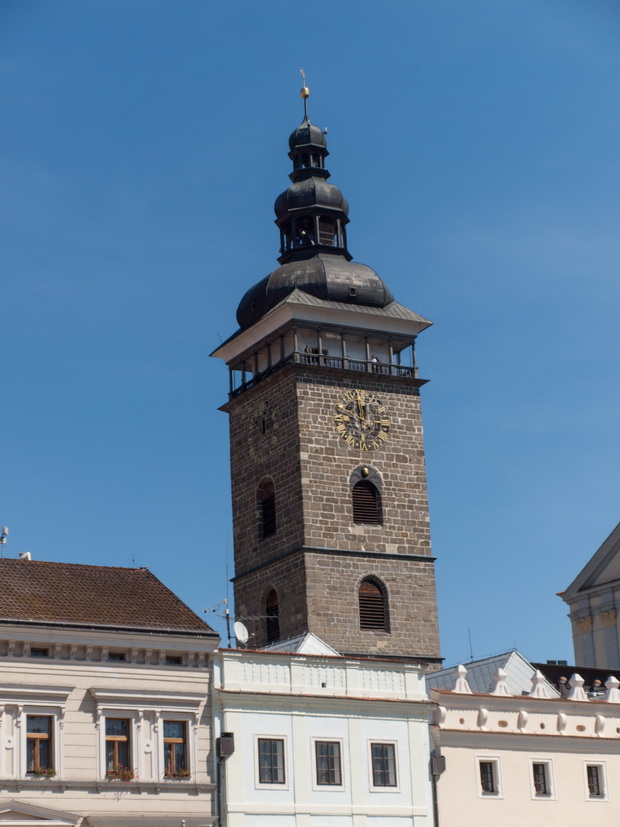
The climbing is not recommended for claustrophobic, but those who will dare it, will enjoy a breathtaking panorama of the city.

Last but not least, we visited the Budweiser brewery, which is located at the north entrance of the city.

The history of the brewery is interesting, so here is some info from Wikipedia: Beer brewing in Budweis dates back to the 13th century. A few hundred years later, two breweries were founded in the city that made beer which they called “Budweiser,” both being beers from the city of Budweis, which was then a part of the Kingdom of Bohemia. In 1876, the American brewer Anheuser-Busch began making a beer which it also called “Budweiser”. This led in 1907 to the “Budweiser trademark dispute” between beer companies claiming trademark rights to the name “Budweiser”.
Anheuser-Busch cites prior registration of the trademark in the United States and battles for the right to use it worldwide in many legal disputes against the Europe-based companies in several countries. The Europeans wish to maintain or regain their right to market their beer under their traditional trademark. Bürgerbräu has marketed its beer as Budweiser Bier since 1876, while Budvar has marketed its product this way since 1895. The two companies in Budweis point out that Budweiser is not a generic name, but refers to a beer actually made in the city.
The existence of several beers with similar names has caused problems in some markets. In 1907, American and Bohemian brewers made an agreement that Anheuser-Busch could market its beer as Budweiser only in North America, while the Bohemian brewers had the rights to the European markets. Anheuser-Busch markets its product as “Bud” (in France and elsewhere) and “Anheuser-Busch B” (in Germany, Austria and Switzerland), where the beer brewed in the original city retains the rights to the name. The United Kingdom and Ireland are some of the few places where both Anheuser-Busch and Budvar beer are sold under the name “Budweiser”.
In 2007 Anheuser-Busch signed a deal with Budějovický Budvar, the maker of the Czech Budweiser, to import Budvar Budweiser into the United States and sell it under the name Czechvar. The partnership with AB InBev was terminated in January 2012, and in July of that year, United States Beverage began responsibility for the sales and marketing of Czechvar in the United States.
In 2009 the European Court of First Instance upheld a ruling that refuses AB InBev, owners of the American Budweiser brand, permission to register the Budweiser brand as a community trademark. After the ruling, AB InBev decided to keep the Budweiser or Bud name in 23 of 27 European countries. In Germany, Budvar has exclusive control over the Budweiser brand name since May 2009. In the U.K., courts have ruled that neither company has exclusive rights to the name Budweiser. According to the verdict of Court of Justice of the European Union in July 2010, Budweiser Budvar has exclusive control over the Budweiser brand name in the whole European Union.
According to the British Budweiser Budvar website, “Currently (in 2012) there are about 40 trademark dispute cases pending in different jurisdictions and some 70 procedural issues up for consideration around the world”.
Until January 2013, the Czech Budweiser Budvar won 89 of the 124 dealt cases with the American Budweiser (eight ended in a draw or conciliation).

We followed the tour that goes through all the stages of beer production in the factory. All starts of course from barley, which is mixed in large tanks with water from local wells.
After 2-3 days, a distinction is done, removing all the grains that are floating and collecting the soaked beans in the desired moisture content, which are transported in containers for vegetation. There at constant and controlled temperature moisture, the grain grows to create the green malt, a process that lasts 7-10 days.
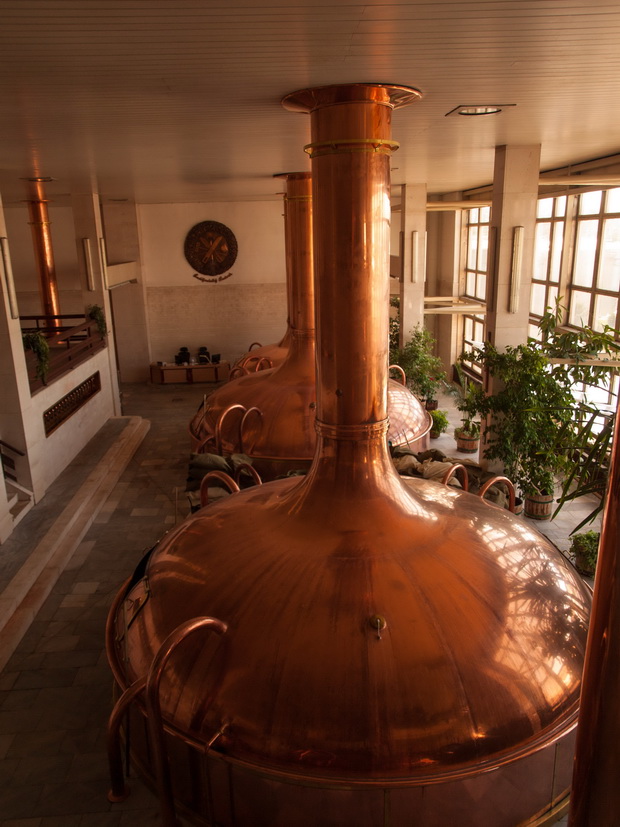
Then the green malt dries, it is polished and boiled before entering the process of mashing. After that the product is transferred to fermentation tanks where the yeast is added and fermentation starts. Last is the maturation process where the beer stays in tanks with low temperature. The tour also included a treat straight from those tanks…

Two glasses was more thatn enough… Hic…
The tour ends with a visit to the modern automated filling and packaging factory.
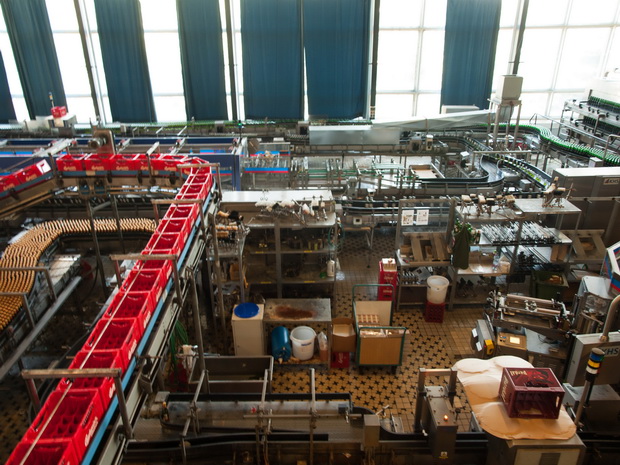
Back on the road heading even further south to Cesky Krumlov. The distance is only a few km, but the traffic is terrible. After 25 km we enter the city and head into the guesthouse Maja. The second floor of the friendly lady’s house was turned into a separate apartment for four people. Check in, as usual and head to visit one of the most beautiful cities in Europe, according to several travel guides.

The medieval city, an Unesco world heritage site, is encircled by the river Vltava. The old town is full of perfectly preserved baroque buildings, paved walkways with small picturesque shops and dozens of small bridges over the river.
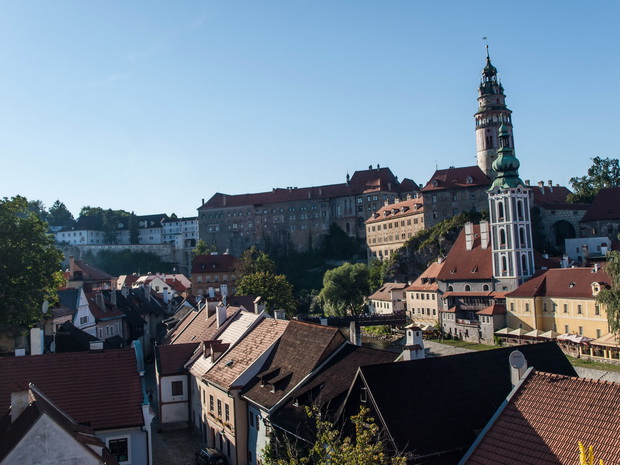
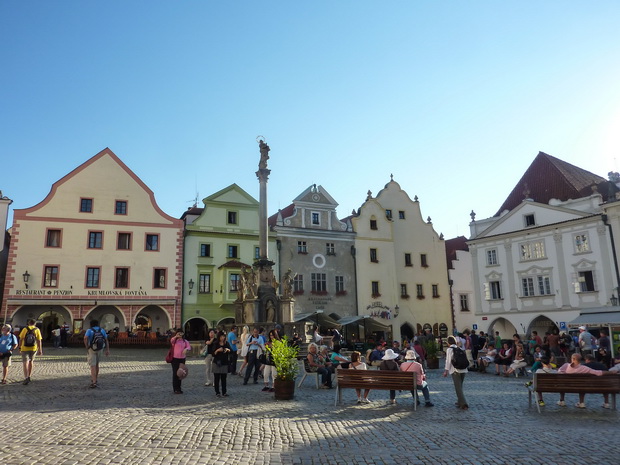

The fountain at the center of the square is dedicated to the victims of the epidemic plague, that hit Europe in the mid of 14th century decimating approximately ⅓ of its population.
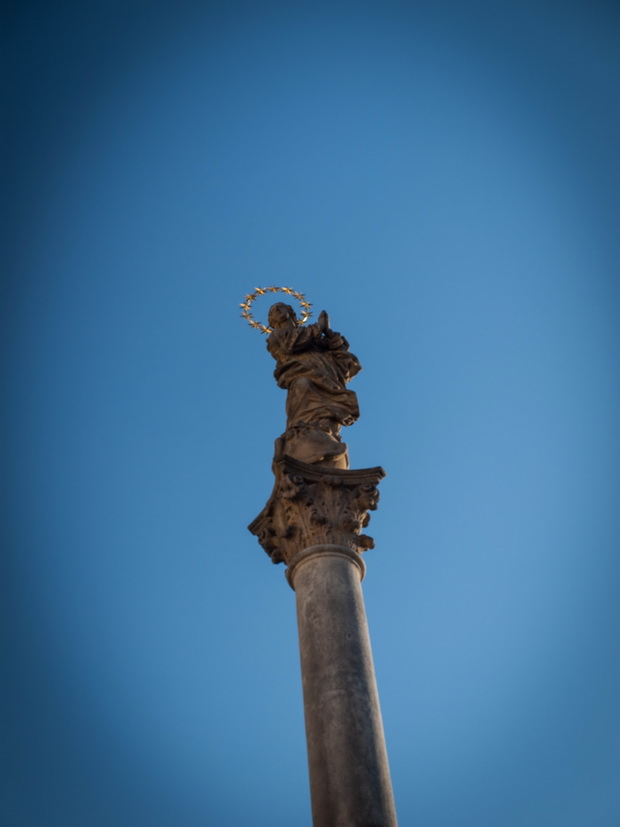
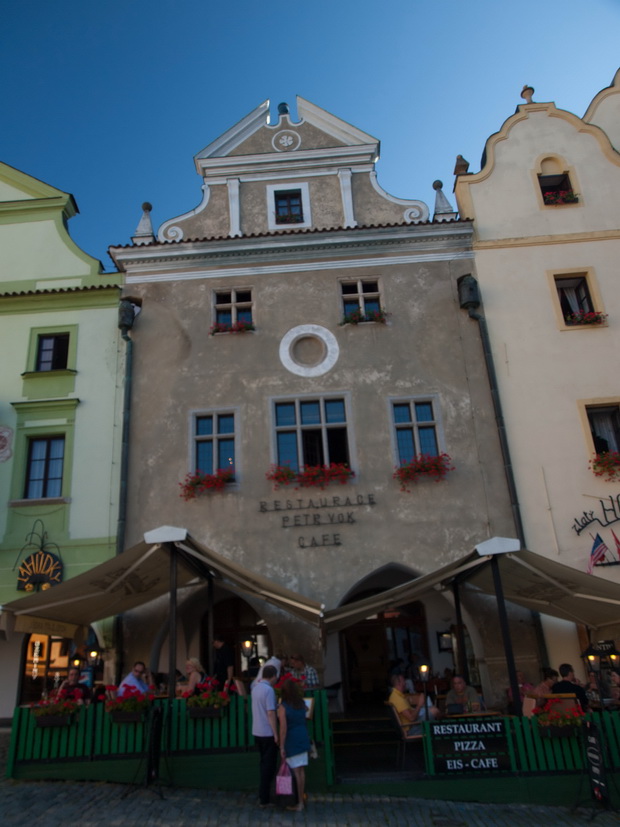
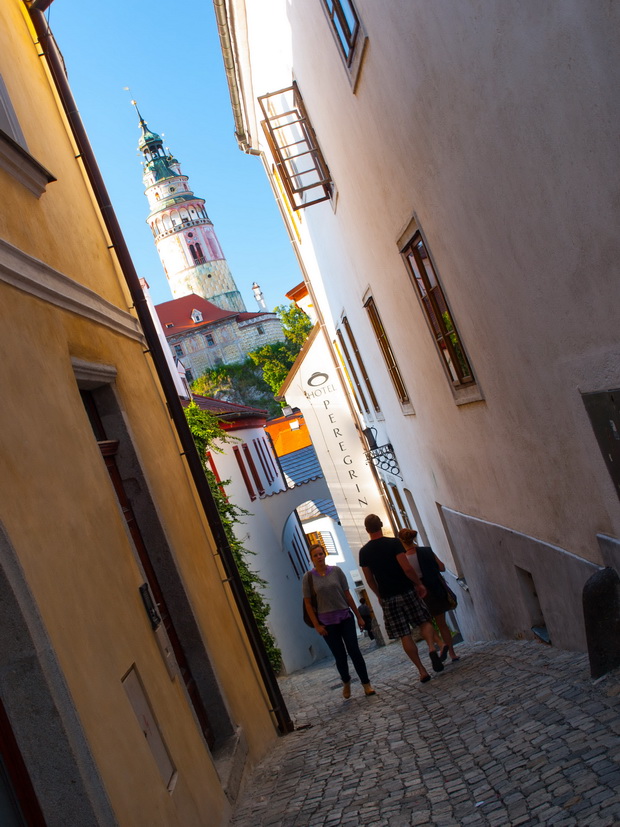

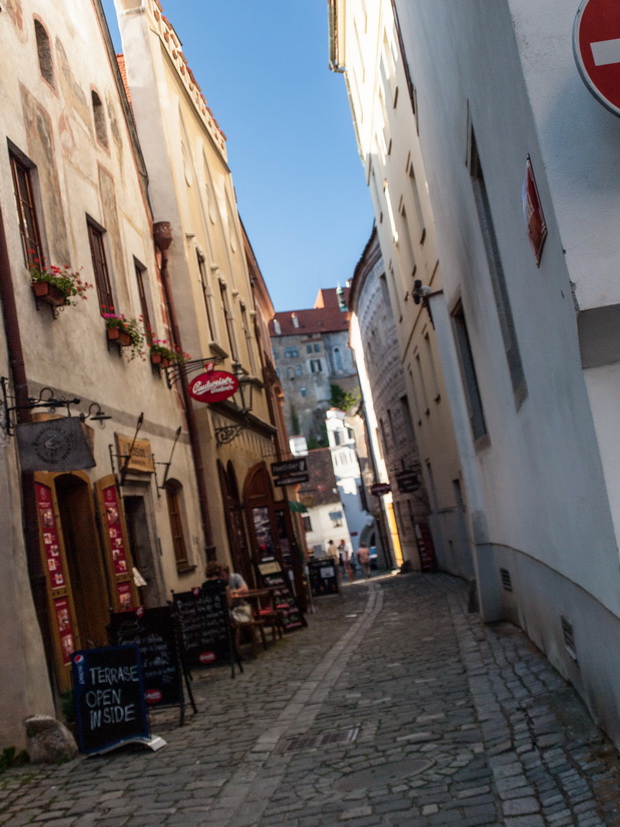
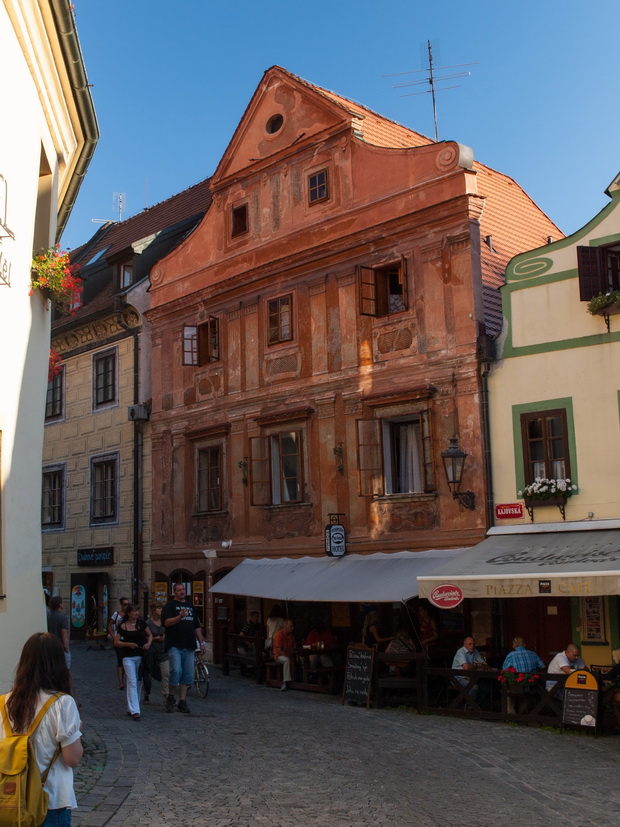

The main attraction of the city is the Krumlov castle, which rises above the old city and was once the seat of the strong family of the House of Rosenberg. It is the second largest castle in the country after the one in Prague.

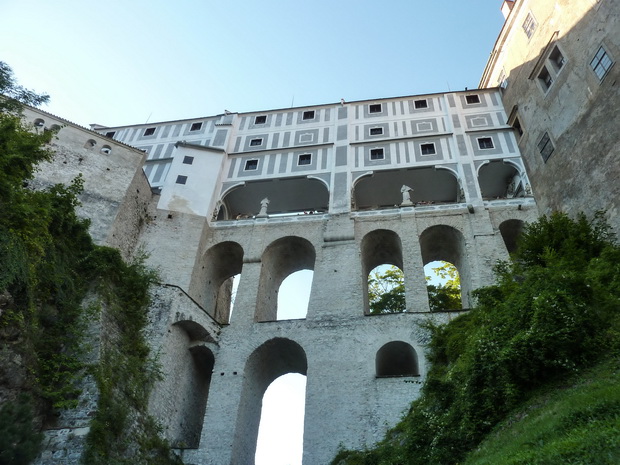
Unfortunately, because it’s late in the afternoon, the castle is closed, but fortunately, there are plenty open places to explore for free. Up to the castle then, to enjoy the magnificent view of the city.
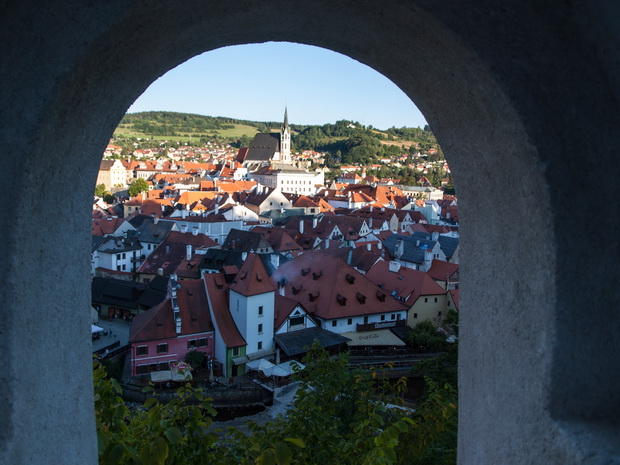
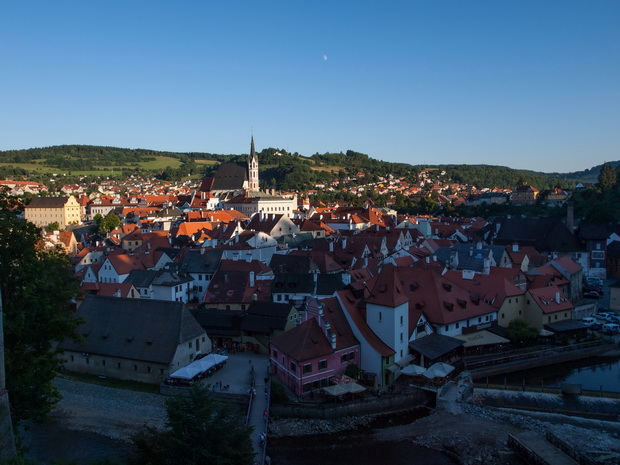
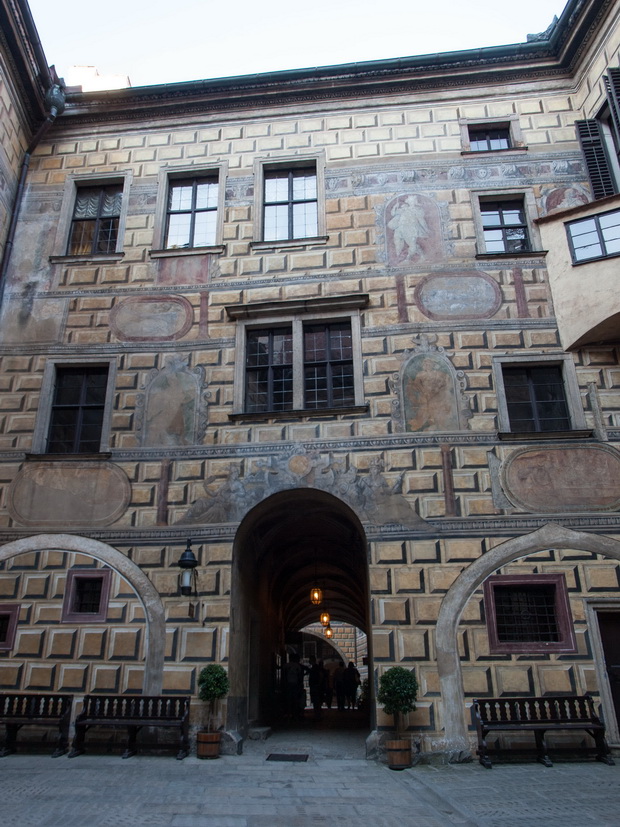

Inside the ditch, before the main entrance of the castle, there was a bear. They had a slot machine and if you wanted you can make a donation to feed the poor bear…

We head back to the city center through beautiful, lovely narrow streets.
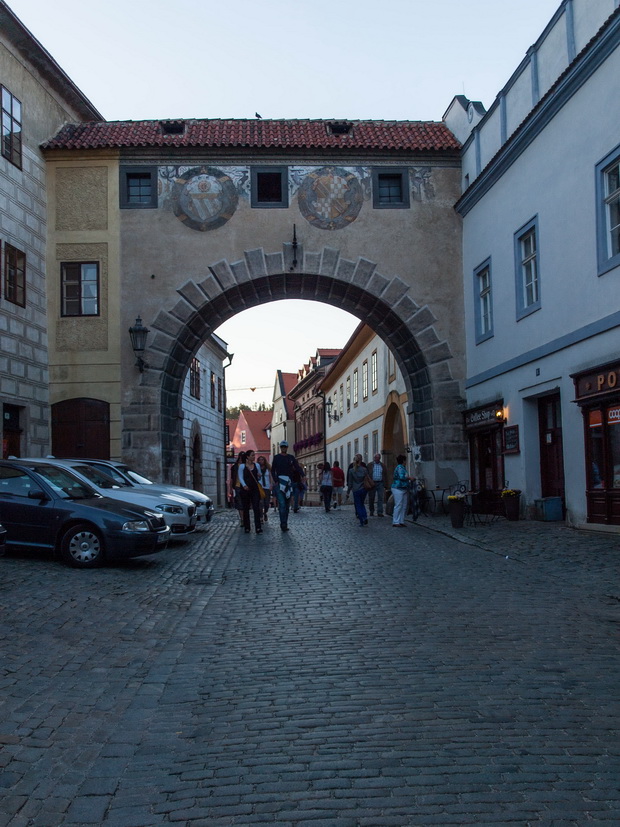

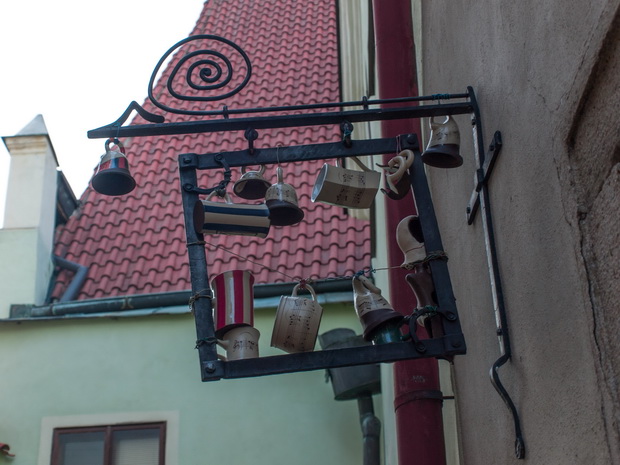
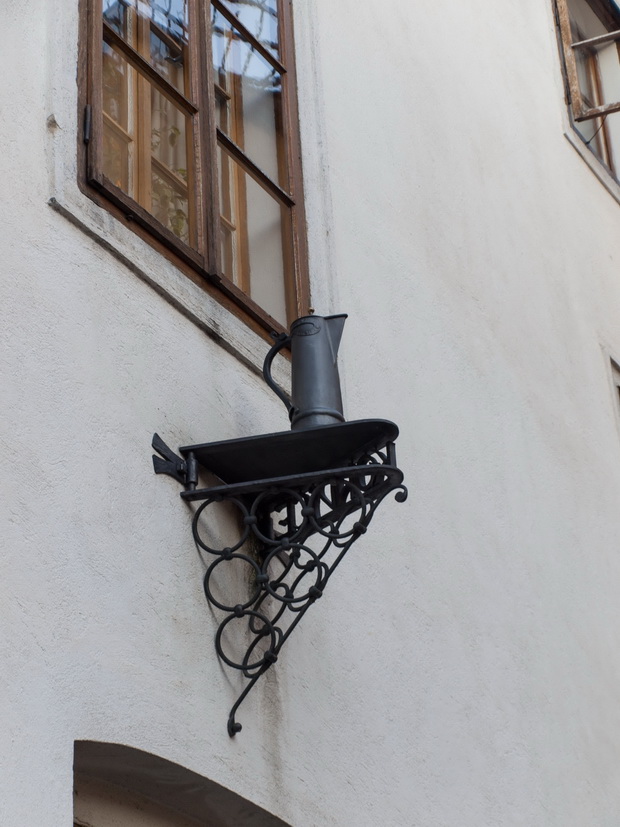
At the city center we have spotted a nice restaurant, named Satlava. It’s traditional with wooden benches, spits and beautiful decoration. Unfortunately everything is booked but luckily a bench empties just in time. Minutes later we enjoy local delicacies…

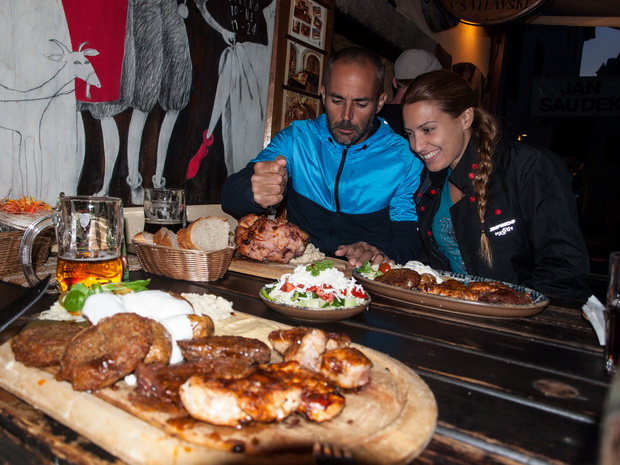
After lunch, we walk again the city under the night lights before we return tired like dogs to our pansion.
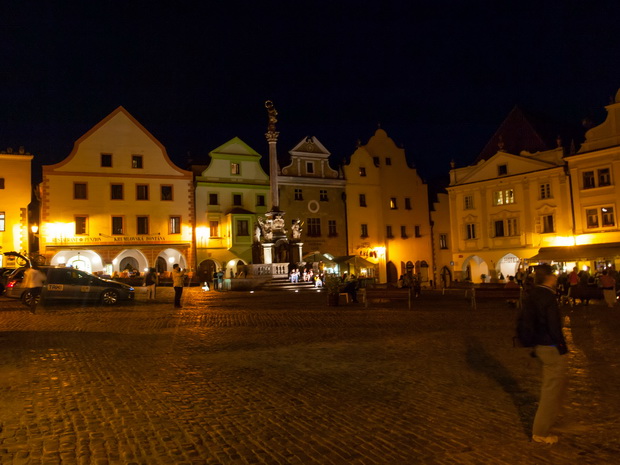
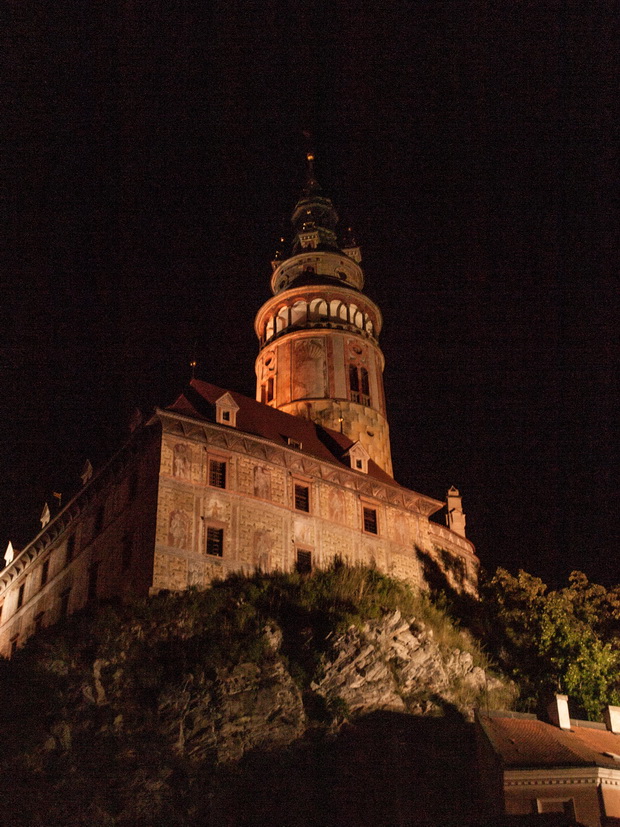

The second group headed -as I said- from Nis to Zagreb through an incredibly boring straight route, full with tolls. But I will let Stavros to tell their story…
The route both within Serbia and Croatia was essentially indifferent. The only difference was that the Croatian motorway was at the same level with the ones of Western-Europe, while the Serbian was like the Greek ones at the 80s.
We arrived at Zagreb late in the afternoon, tired from the monotonous trip and having paid for 3 motorcycles 43€ in tolls! We headed to the Trsje district and the apartment that we had booked (Apartments Trsje). The district is a suburb on a hill on the outskirts of the city and the apartment was very comfortable, with a beautiful terrace.
We grab a taxi, head to the city center and following the recommendations of the hotel owner we end up in a restaurant Boban</ a>. Boban, the owner of the restaurant, was the best Croatian football player ever in my opinion. However, the Italian food was not so good and it was really expensive (52€ for 4 persons). After lunch we head to visit the city with no mood to read-follow our guide. Luckily outside the city’s Cathedral, Athina found a Croatian girl (sorry, can’t remember her name) and together with two Polish couples, they showed us around the city.
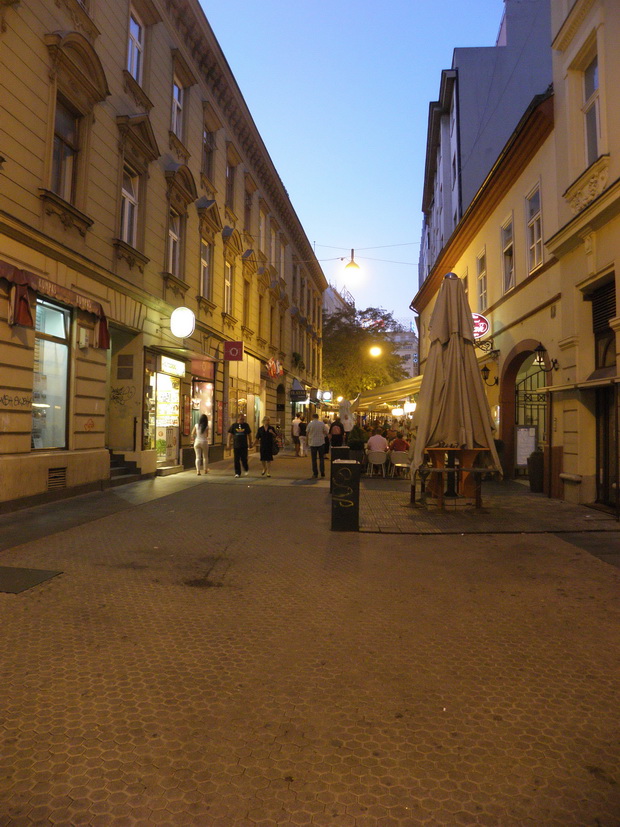


Top highlight was the church of St. Mark’s and quite interesting was the broken relationships museum, which unfortunately was closed!
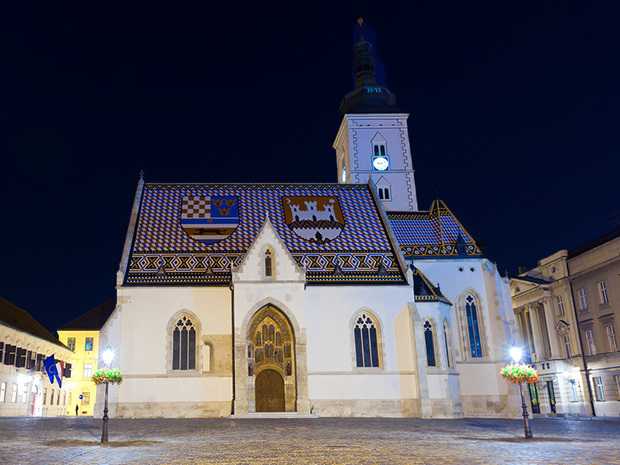

The general impression from Zagreb, however, is very good. It’s a clean, lively and generally joyful city, with young people on the streets, worth spending a few more days to explore it. But we have to move on. Next time maybe…
| « Previous Page | Next Page » |




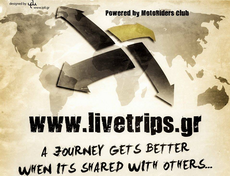


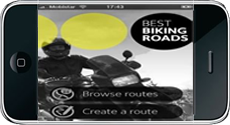
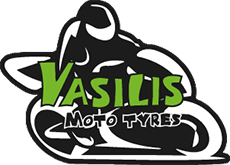

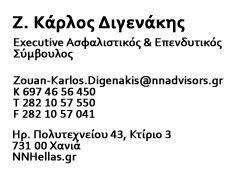
Μπραβο παιδια παντα τετοια ,
Ταξιδευω απο το 1992 με rd 350 στην αρχη fzr1000 ,hayabusa αργοτερα και απο περυσι t max500 yamaha.
Σας διαβαζω γιατι φετος θα ειναι η πρωτη φορα που θα περασω απο βαλκανια.
Λοιπον ας ειμαστε ολοι καλα να απολαμβανουμε αυτο το μοναδικο που σου κανει η μοτοσυκλετα , να σε κανει 18 χρονων με το που ξεκινας το ταξιδι
Ευχαριστούμε Χρήστο…
Είμαι σίγουρος πως θα περάσεις υπέροχα. Τα Βαλκάνια κρύβουν απίστευτες ομορφιές.
Οι μοτοσυκλέτες είναι “μηχανές του χρόνου” τελικά
Πραγματικά πολύ όμορφο ταξιδιωτικό, φέτος είμασταν και εμείς στο περίπου!!! Το μόνο που έχω να πω σαν διευκόλυνση, αν δεν το έχετε κάνει ήδη, πιστεύω ότι είναι καλύτερα να πηγαίνεις μαυροβούνιο μέσω κοσόβου. Δηλαδη σκόπια, κόσοβο, μαυροβούνιο. Εχω πάει ήδη 2 φορές από αυτην την διαδρομή και με αυτά που βλέπω από αλβανία είναι πολύ καλύτερη από άποψη δρόμων. Δεν υπάρχει κανένας κίνδυνος, απλά βγάζεις μια ασφάλεια 15 ευρώ που ισχύει για 15 μέρες πριν μπεις στο κόσοβο, συνεχίζεις μεχρο ουροσεβατς και απο εκει αριστερα να περασεις τα σύνορα για μαυροβουνιο. Λιγα παραπάνω χλμ αλλα που βγαίνουν πιο εύκολα και πιο γρήγορα.
Έχεις δίκιο Γιώργο. Μαυροβούνιο – Κόσοβο – Σκόπια είναι πολύ πιο εύκολα. Εμείς επιλέξαμε Αλβανία γιατί θέλαμε να κάνουμε την ορεινή διαδρομή Kukes-Peshkopi, η οποία είναι κα-τα-πλη-κτι-κή, αλλά όλα τα περίχωρα είναι δράμα…
Όπως και να ‘χει, όλα είναι μια εμπειρία. Ταξίδι να είναι και όπου να’ ναι!
Καλούς δρόμους να ‘χουμε
ΠΟΛΥ ΚΑΛΟ ΚΑΙ ΑΝΑΛΥΤΙΚΟΤΑΤΟ.ΕΙΝΑΙ ΤΕΛΙΚΑ ΞΕΣΗΚΩΜΟΣ ΝΑ ΔΙΑΒΑΖΕΙ ΚΑΝΕΙΣ ΤΑ ΤΑΞΙΔΙΩΤΙΚΑ ΣΑΣ.ΤΟ ΚΑΛΟ ΕΙΝΑΙ ΝΑ ΕΧΕΙ ΠΟΚΙΛΙΑ ΤΟ ΤΑΞΙΔΙ ΚΑΙ ΑΥΤΟ ΕΙΧΕ ΣΥΝΔΙΑΣΜΟ ΟΛΩΝ(ΣΑΛΩΝΙΑ-ΑΛΩΝΙΑ).ΤΕΛΙΚΑ ΔΕΝ ΘΑ ΠΑΩ ΠΟΤΕ ΠΟΡΤΟΓΑΛΙΑ ΑΠ’ΟΤΙ ΦΑΙΝΕΤΕ…ΠΑΛΙ ΣΤΑ ΒΑΛΚΑΝΙΑ ΘΑ ΒΡΕΘΩ….
Να ‘σαι καλά Γιώργο. Τα Βαλκάνια όντως μας έλκουν σαν μαγνήτης. Έχουν κάτι το μαγικό που όλο μας κάνουν να στρέωουμε τις ρόδες μας προς τα εκεί. Ίσως είναι το ανεκμετάλευτο ακόμα παρθένο τοπίο που σε συνδιασμό με τους αυθαιντικούς ανθρώπους που δεν σε κοιτάνε σαν κομπόδεμα. Ένα είναι σίγουρο πάντως… Πως και οι δικές μου ρόδες σύντομα θα ξανατραβήξουν ξανά προς τις Βαλκανικές χώρες. Έχω κάνει 5-6 ταξίδια εκεί, αλλά έχω ακόμα πολλά να δω.
Πολλά ευχαριστώ & πολλά μπράβο στην παρέα!!
Να είστε καλά παιδιά!!Πάντα τέτοια!!
Να είστε γεροί να ταξιδεύετε!!
Ευχαριστώ για το χρόνο & την ενέργεια που δαπανήσατε για να το μοιραστείτε!!
Τέτοια ταξιδιωτικά αποτελούν πολύτιμο διάλλειμα & πηγή πληροφοριών για κάθε επίδοξο ταξιδιώτη.
Ευχαριστούμε Κωστή